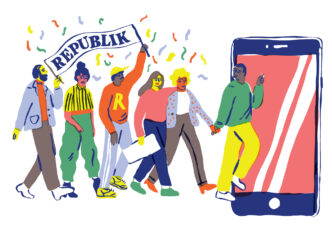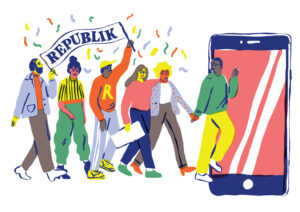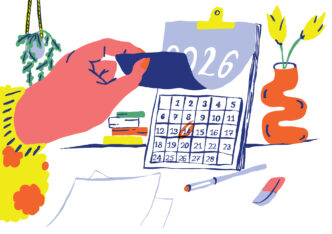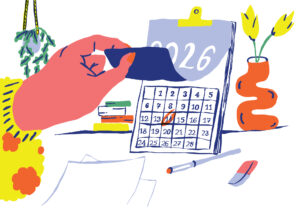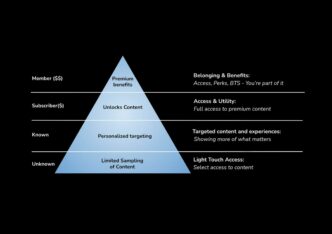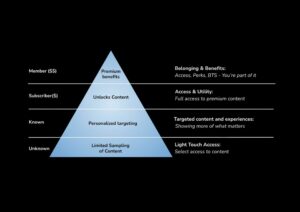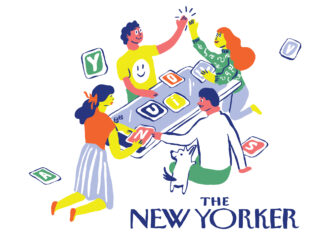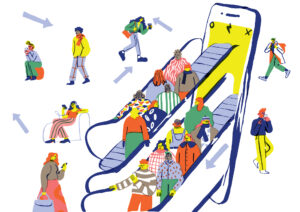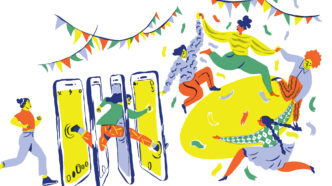
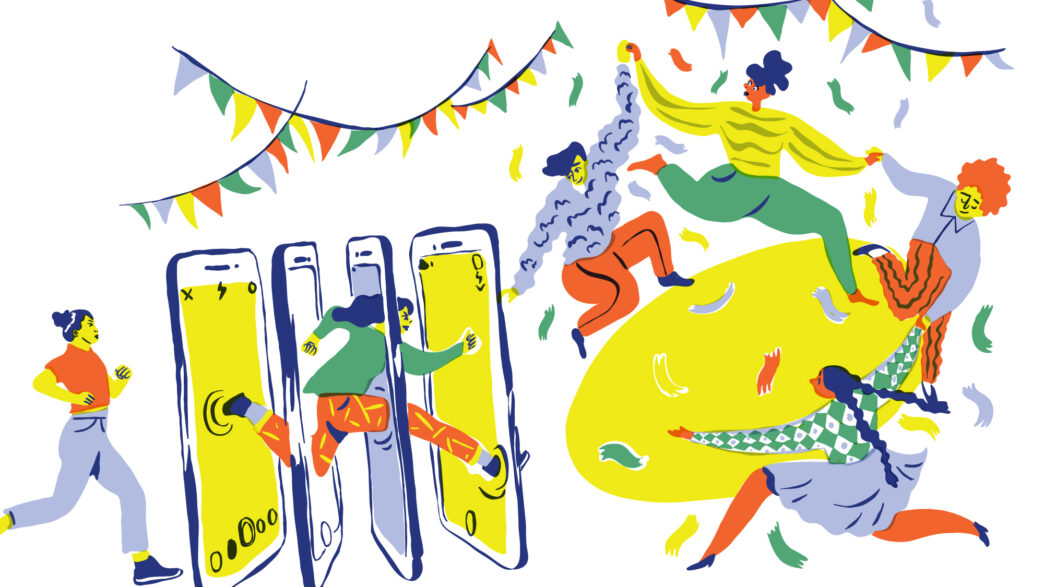
October 13th, 2022: Madeleine & I launched The Audiencers at an intimate party on Boulevard Haussman in Paris. With representatives from France’s largest online media houses gathered to toast the occasion, I spent the evening wondering how many millions (or billions) of page views were gathered within those four walls. I never got the answer, but the story of The Audiencers, on the other hand, was well and truly underway.

Our ambition was to unite publishing professionals around the common goals of engaging, converting and retaining online audiences. We created this new brand (The Audiencers belongs to the start-up Poool) with all the candor of those who don’t know what they’re doing, and the demands of those who want it to be useful.
Supported by the start-up’s marketing team, The Audiencers has never pretended to be a medium from scratch. And yet, even if all our readers are now well aware that this medium is the marketing arm of Poool, The Audiencers continues to grow in stature and robustness as a brand in and of itself. To the point where, through the accumulation of side-projects, it has become a community.
The Audiencers’ profile
Behind The Audiencers, everything comes in twos. First of all, the site is available in two languages: French to build loyalty among Poool’s existing customers, and English to move into Anglophone markets.
In 600 days, we published nearly 400 articles, in English and French. Behind this production, Poool’s in-house team, but importantly with the help of external guests: working professionals, consultants, veteran professionals, independent experts. Guaranteeing the credibility of our content, never censored and with little guidance, our external columnists enable The Audiencers to speak to those who make the industry what it is.
In 18 months, we’d convinced over 5,000 qualified professionals to subscribe to our newsletter, which almost 50% of them open every two weeks.
As defined during our persona building sessions pre-launch, our editorial grid was segmented based on three needs held by our target audience:
- Decisions, to support the strategic, business decisions by key DMs
- Operations, the how, to guide the execution of operational staff
- Inspiration, to provide benchmarks
In addition to this initial breakdown of content, a deliberately light taxonomy (no more than 40 terms) was used to qualify each piece of content according to the theme covered: subscription, paywall, engagement, ARPU, newsletters, lifetime value, churn, etc.
An audience conversion strategy from the outset: articles blocked by a datawall
One of the most game-changing decisions in our inbound marketing strategy was to gate articles from day one. Not all of them and not on the first-read to ensure a balance between frustration and engagement, but blocking all the same.
Specifically, readers were asked to tell us who they are (first name, last name, company and business email address) to be able to read the article in its entirety. This also signed the user up to our newsletter, a technique that has allowed us to grow our readership and engagement so quickly.

Knowing who our readers are has also enabled us to understand precisely who we attract, and redirect our editorial line to appeal to those we’re targeting. Above all, it allows us to put a human name to an analytics hit.

From online to real life
What if we got all the professionals with the same problems in the same room, on a stage, with microphones, music and a chill vibe, wouldn’t that be cool? Weekends with Madeleine can be dangerous, and the idea that germinated that Sunday was the second building block of the community to come. The name came soon after: The Audiencers’ Festival.
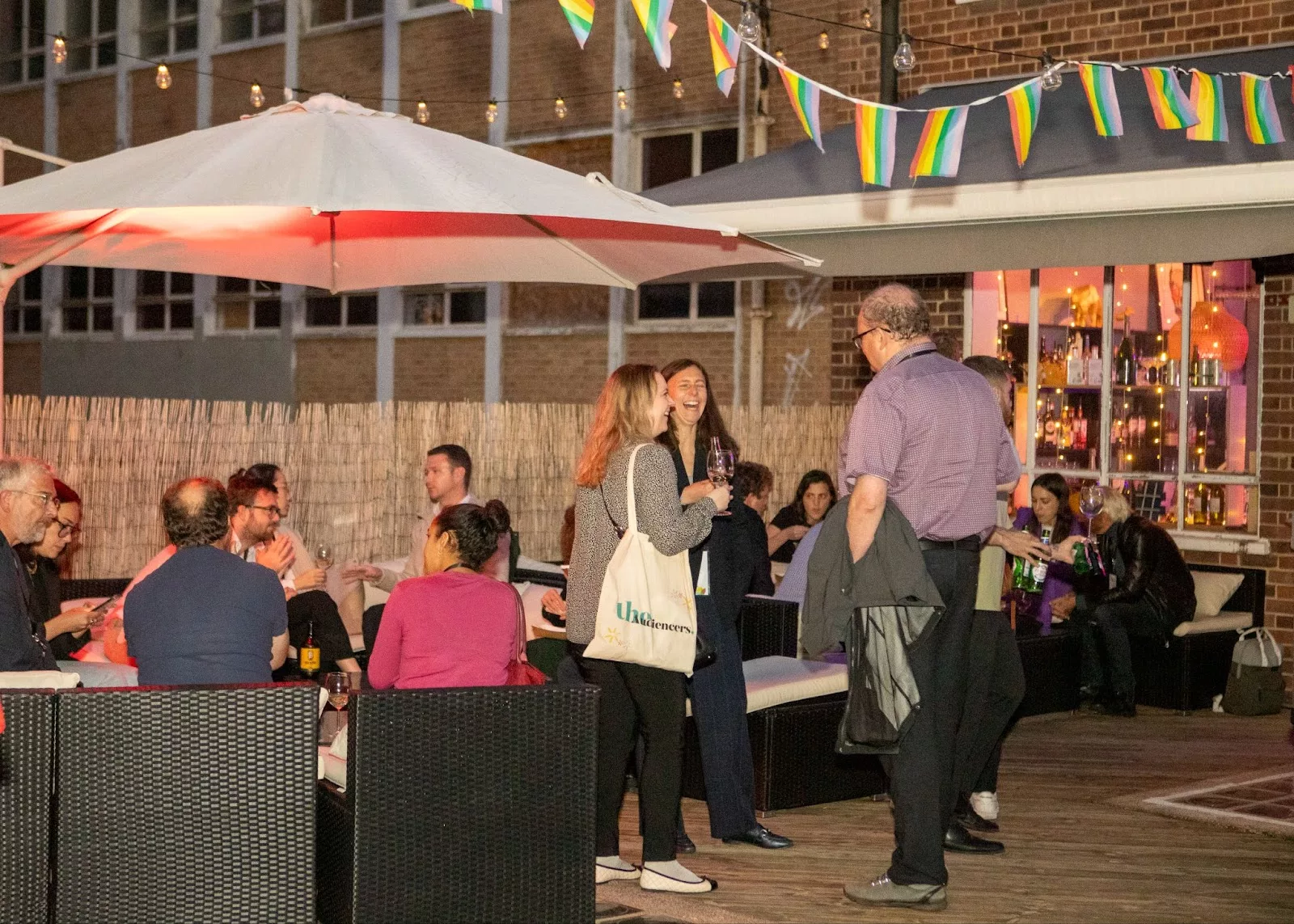
Between 100 and 200 media professionals in an auditorium, the first in Paris in September 2023, the second in London a month later… Then on to Madrid, New York, Toronto, before a second European tour. During these exceptional events, the emotion of meeting up again with peers, former colleagues, sometimes competitors – to share anything but small talk. If there’s one thing Madeleine and I love to scratch beyond the surface – what’s behind the empty operational slides. With a phrase uttered over and over again: “Okay, but in concrete terms, how do you do that?”
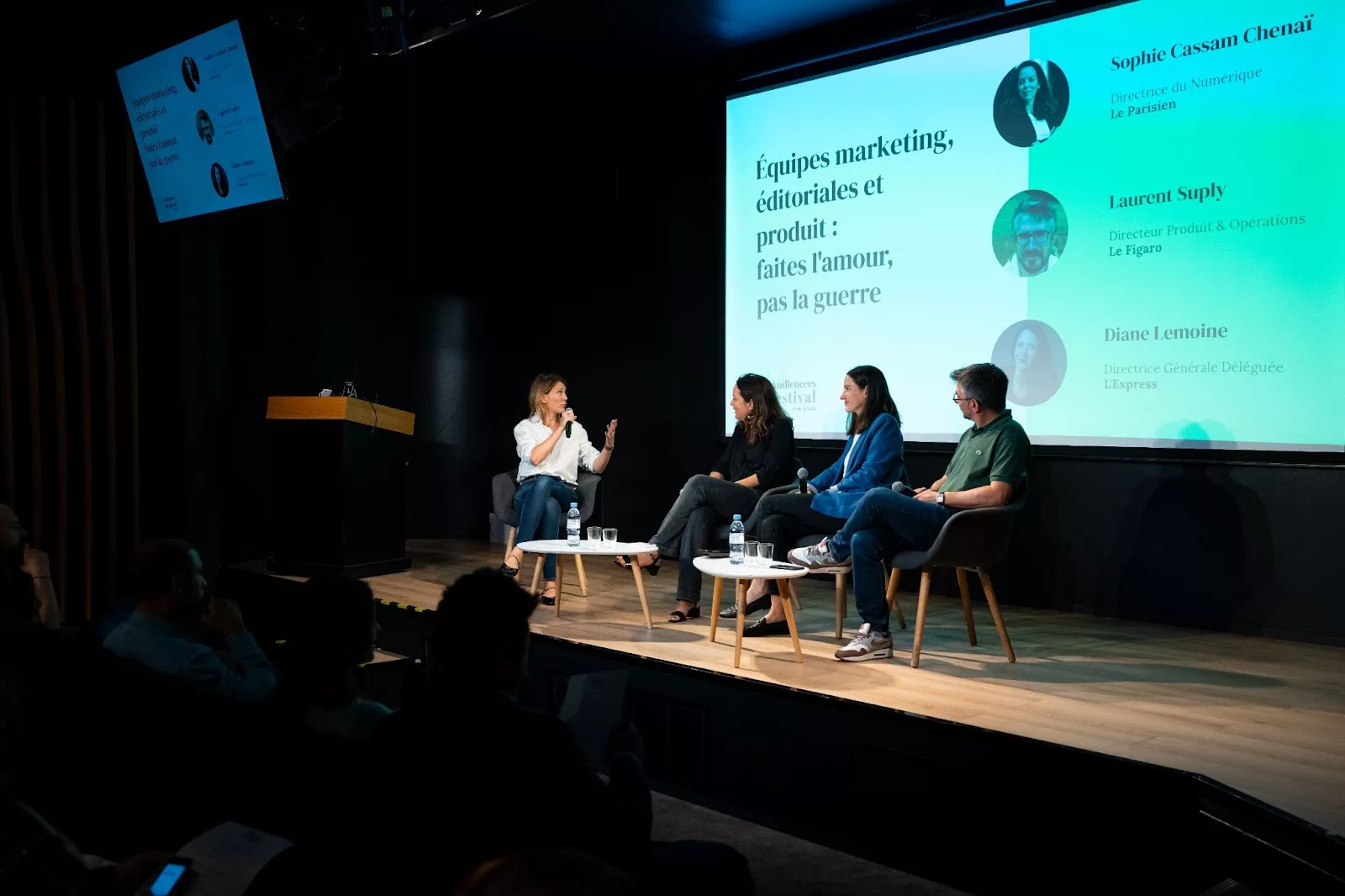
What we’ll remember about these Festivals is the transparency of each of the speakers on stage, and what happens when you step off, coffee or glass in hand. While we wouldn’t yet call it a community, we had still managed to bring a group of people with converging interests together…
A WhatsApp community, for questions, discussion and the odd joke
On the eve of our first Paris Festival, we created the first WhatsApp group. The original plan was simply to be able to address attendees during the event, call them back to the auditorium when breaks were over, encourage networking, that sort of thing. By the following day, some sixty additional people had agreed to share their telephone numbers with us to be a part of the conversation. This proof of concept was too good an opportunity to miss, and there was no stopping the momentum.

So in the weeks that followed, we turned into community managers, standing guard at the entrance:
You’re a publisher, you get in. You’re a tech company, you don’t get in.
We then shared photos of the event. A survey. Then useful links. And then group members started introducing themselves to the community. Little by little, the questions that had previously been kept in the privacy of meeting rooms were asked, and others answered. People began to help each other (a crazy concept in business, I know). Links to the WhatsApp community shared in company Slack channels. A new group for each Festival. It had begun.
After 7 months, the French-speaking group has nearly 500 media professionals, the English-language group over 300, and it’s often necessary to take a deep breath when you’ve missed a week’s worth of messages, so active are these groups.
The final step: reserving the site for logged members
By April 2024, the foundations of our brand were laid. We had :
- A name “The Audiencers” more or less recognized by the pros in our sector (awareness)
- A newsletter, opened by half its subscribers (interest)
- A monthly audience on theaudiencers.com, equivalent to the number of NL subscribers (engagement and unique value)
- One-fifteenth of those subscribers had joined the WhatsApp groups (trust and loyalty)
If you’ve followed the process correctly, you’ll have understood that we now have, in our database:
- Subscribers to our newsletter (served by Hubspot)
- Registrations for our Festivals (managed by Luma)
- On WhatsApp, phone numbers
- Everywhere (LinkedIn, email, WhatsApp…): messages and interactions with us.
The question is, how do we bring it all together?
Registration.
We’ve been preaching about the importance of identifying your audience across our content and events – it was time to put this into practice.
At the beginning of May, you’ll have likely seen banners on theaudiencers.com suggesting that you create an account. Our aim: to reserve our editorial production for logged-in members, of course.

We created the banner with Poool Engage, with the following display conditions:

Of course, we also replaced the datawall with a registration wall.

Gradually, we started placing more of our content behind this wall, reserving it for identified members only.
Blocking access to content: the risks
We’re not afraid of the drop in audience and bounce rate that this strategy could induce. For one thing, the site has never (and probably never will be) financed by any advertising whatsoever. And if we’re unable to find out who’s reading us, there’s no reason for the medium to exist. A hit on an analytics tool has never been of the slightest use to a brand publisher, let alone one with a B2B stance!
We had a datawall completion rate of 20%, and are aiming for at least the same for our registration banners.

Registering our reader base is indeed the final step in our transition from a top-down brand publisher to a transverse community.
Registration: from diffused audiences to owned ones
Do your community exchanges take place on GAFAM platforms? Ours too (Linkedin, WhatsApp).
Developing community tools on our own platform (planting our carrots in our own garden, not the neighbor’s) became a priority:
- On the one hand, to practice what we preach
- On the other, to stop feeding those who deport the value of our work
There were 2 concrete projects:
1- Install a login system, with a “My Account” area
2- Allow interaction between members, via a comment section
For the login system, we chose Auth0, for its ease of installation and its many possible third-party connections:


At the launch, we offered a social login option with Google, but this brought us mostly personal accounts. But, being a B2B medium, we’re mainly looking for professional email addresses. That’s why the Google login has been removed.
As for the “My Account” section, we developed it ourselves, connecting it with the Poool Dashboard login so as to be able to identify Poool customers.

Like all good registration journeys, new members are led through an email onboarding journey with the goal of welcoming them, providing immediate value (content and newsletter), introducing them to the community (engagement across channels) and inviting them to our latest events (relationship building IRL).

> Benchmarking publishers’ account creation journey
On-site comments: enabling discussion chez nous (at our home)
To add a commenting system to theaudiencers.com, we enlisted the help of Canadian company, Viafoura, who helped us with the technical, organizational and marketing elements of a community.
Specifically:
- Comments at the bottom of the article
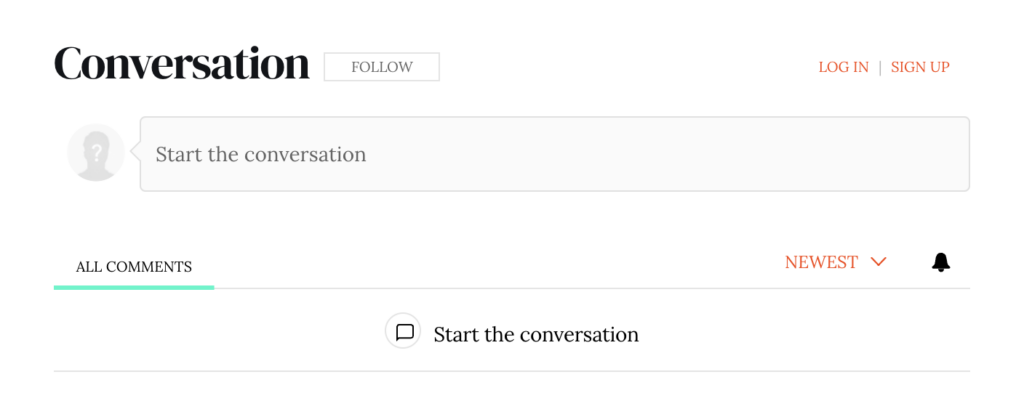
- A personalized feed for each member

- With an integrated moderating system (an essential for commenting)
Two more things
At launch, the site’s baseline was “Engagement, Conversion, Retention”. Firstly, because it set the tone for what we were going to talk about. Also, because these three words work in both French and English (bilingual problems!).
18 months later, we decided to free ourselves from this linguistic advantage and proudly step into our new community ambition.
Please meet…

We’ve also redesigned our menu to replace the original headings (Decisions / Operations / Inspirations), which had become a little too blurred. Now, the tags most commonly used on the site, so that professionals faced with a specific problem can access the articles dealing with it more quickly.
How do we know if we’re succeeding?
The KPIs that we’ll be tracking:
- Audience log rate (via Auth0)
- Wall conversion rate (via Poool)
- Engagement (frequency of visits, time spent on the site, number of pages viewed per session, scroll rate)
- And of course, the number of active members
It’s a launch.
Will we succeed? I don’t know. I’m convinced of the principles that drive our decisions. The difference will be in execution.
We’d love to hear your thoughts! Comment below with your feedback on this journey and recent updates!



